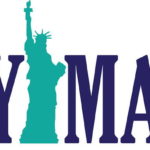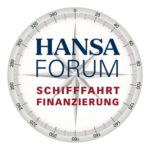Even as the profile of shipping funds providers changes, the U.S. is still a very important marketplace for ship finance. Barry Parker gives an overview of the busy kitchen
The maritime business has been described variously as »capital intensive«, or, less politely, as »a voracious consumer of financial capital[ds_preview]«. Though the U.S. is not the center of shipowning and operations that it was at one time, its capital markets have continued to play an important role funding shipping assets. Arguably, with the reduced availability of conventional bank finance in the wake of 2008’s financial rumbles, the role of the U.S. as a provider of »alternative capital« for international shipping and some domestic fleets is even more important than previously. Indeed, »New York: The Capital for Shipping« is the tagline for New York Maritime (NYMAR), an organization of lawyers, financiers and other professionals serving the maritime business. Public offerings of shipping companies, especially initial flotations (IPOs) attract media attention, IPO investors stepped away from shipping as a result of desultory hires and freights throughout 2016 and 2017. However, »follow on« (secondary) offerings of shares in already listed entities saw something of a boom.
Many owners in the domestic shipping trades, chiefly craft serving around harbors, and for tugs and barges serving the inland river system, are financed either privately, or through institutions providing conventional equipment finance. Mr. Robert »Bobby« Campbell, Vice President Capital Markets, at Signature Financial LLC, one of the leaders in the »brownwater/inland« segment, told HANSA: »To serve our customers, we look for opportunities in the capital markets, or in direct transactions,« adding that »… we have not been seeing a lot of newbuilds during 2016–2017, but we have worked on quite a few transactions, with refinancings of existing debt, or new financings on unencumbered assets, already in service, being our biggest category.«
Large regional lenders
Signature Financial LLC will provide funding for new maritime assets with a loan term of typically seven to ten years, with a longer amortization timeline, as well as existing equipment (often for five to seven year term). Mr. Campbell explained that such transactions, usually structured as a loan, might fund the purchase of a vessel that may have recently been refurbished. On larger deals, which might reach 25 mill. $ in size, Signature may be part of a group of multiple lenders.
With borrowers frequently privately held (and providing regulatory filings available online), this marketplace is largely unknown outside the United States. Other lenders active in this part of the market include large regional lenders and equipment finance arms of organizations such as Fifth Third Bank (Cincinnati, Ohio), PNC (Pittsburgh, Pa), KeyBank (Cleveland, Ohio), Regions Bank (Birmingham, Alabama), Suntrust (Atlanta, Ga.) and Wells Fargo Equipment Leasing. Mr. Campbell told HANSA that roughly half of the transactions might be tied to LIBOR – with a margin typically around 175 b.p. to 300 b.p., not unlike international shipping deals. Others lending might be tied to the rates for swap deals with a comparable term, offering the borrower a rate fixed over that term.
Baby bonds and preferred equity
Larger entities may have additional outlets; the U.S., with its outsized capital markets, has been the venue for considerable money raises. These vehicles include loans syndicated among a group of banks and – in recent years – the »Term Loan B« mechanisms where institutional investors such as insurance or pension funds (rather than the group of banks) participate in the loan. Another variation – credit funds – providing debt, albeit a higher margins than banks, have also come on the scene to fill voids. Speaking at the late 2017 Marine Money Ship Finance Forum in New York, Mr. Chris Weyers, Managing Director at investment bank Stifel, describing the roster of capital market products, also noted that maritime businesses have raised money through structures of »baby bonds« (bonds aimed at retail investors) and »preferred equity« (equity which pays a healthy fixed dividend, resembling a bond).
One large privately owned U.S. entity at the forefront of both vessel technology and financial engineering is New Orleans-based Harvey Gulf International Marine, best known for its groundbreaking move into LNG fueled offshore support vessels. On the funding front, Harvey Gulf secured funding in 2008 from the Jordan Company, a New York domiciled private equity investor still owning a substantial stake alongside the Guidry family. Readers of HANSA may be familiar with Jordan through its successful investment in TAL, the container leasing giant. Intermarine, a U.S. based project cargo/heavy lift specialist, also gained private backing around the same time, with the PE side of New Mountain Capital, taking a large stake, which it has retained.
Apollo, York and Co.
Oaktree Capital, a PE investor well known to the maritime industry, retains stakes in multiple companies in diverse shipping sectors. Apollo Global and Blackstone Group, both top tier fund packagers, have each owned equity stakes in both international and U.S. tanker companies.
Other important U.S. based PE investors include KKR (well known to HANSA readers because of its acquisition, along with Borealis, of Hanseatic Maritime in 2015). KKR is also an owner of Chembulk Tankers where a previous group of PE investors made a successful exit earlier in the cycle. Other PE outfits behind shipping companies include York Capital (Costamare and also Chembulk) and Riverstone (Ridgebury Tankers). York Capital has also been involved in drybulk business alongside agribusiness giant Bunge Corp; specialist finance units within Cargill (known on the agriculture and commodities side) have also invested in both dry and tanker sectors.
With reduced bank capital, alternative sources are filling the void on the liability side of shipping balance sheets. In late 2017, a new Oaktree entity, Fleetscape, (which will likely concentrate on debt and hybrid type funds) raised 400mill. $ from institutional investors.
Term B loans
The right hand side of Harvey Gulf’s balance sheet includes 600mill. $ of Term Loan B debt – booked in 2013 in conjunction with a conventional 150mill. $ term loan, and a 250mill. $ »revolver«.
Where debt is held by institutions, ratings are a necessity. In early 2017, a nadir for offshore activity even as oil prices were already rising, Harvey Gulf’s Term Loan B debt (which resembles a bond, rather than a loan, in terms of amortization and covenants), saw a steep downgrade.
International Seaways (NYSE–»INSW«), an offshoot of U.S. stalwart OSG, based in New York and serving international tanker markets, has also sourced funds through the Term Loan B route. Shortly after emerging as an independent company as part of the pre-packaged restructuring of OSG in late 2016, INSW booked a 550mill. $ Senior Secured First Lien facility with a five year maturity (coming due in 2022), at three month Libor plus 550 basis points.
In the liner shipping sectors of the business (and sometimes in the cruise segment), capital for public projects, where benefits accrue broadly to a particular city or region, has traditionally come in from a »public« (local or regional government) entity. Governments continually face shortages of capital, so savvy deal structurers have combined »private« participation, where an infrastructure fund would own a terminal at a port.
A relatively new development is the participation of large funds that have historically backstopped infrastructure projects, for example terminals for containerships, in non-liner maritime shipping businesses. A groundbreaking 2017 deal saw Brookfield Business Partners, the structured investment arm within the Canadian behemoth Brookfield Asset Managers – known for its investments in container terminals on the U.S. West Coast –, provide a buoying investment into beleaguered Teekay Offshore. Arguably, the offshore sector, with its multiyear contracts to major oil companies, is not typical of the workaday shipping world. But nevertheless, the deal underscores the ability of capital providers to modify their business models to meet the funding contours of the maritime business.
Barry Parker





















